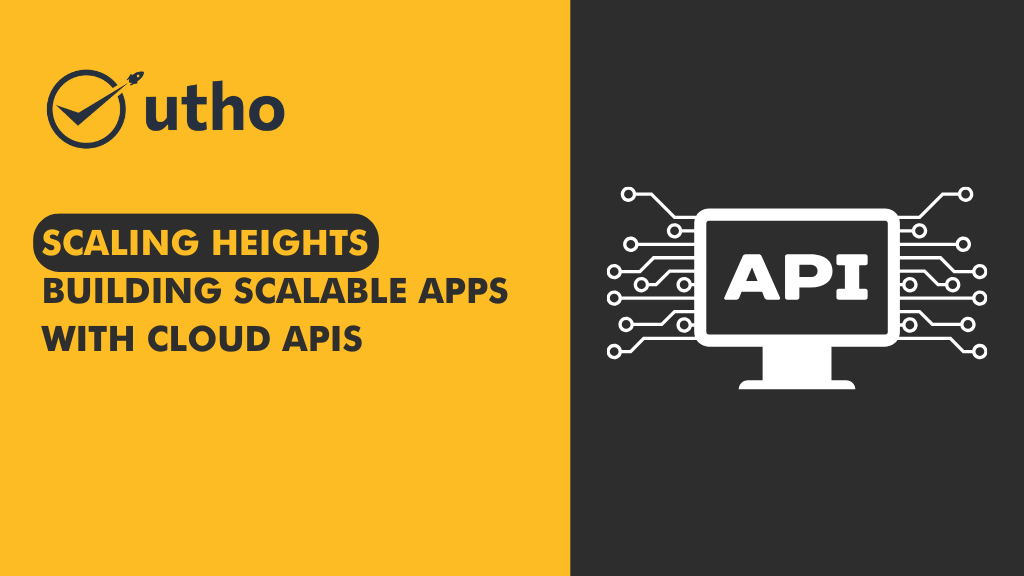In the world of software development, simplicity is power—and that’s exactly what abstraction offers.
Abstraction is a key principle of Object-Oriented Programming (OOP). It works with encapsulation, inheritance, and polymorphism. It plays a foundational role in reducing code complexity by focusing on the “what” rather than the “how.”
In simple terms, data abstraction allows developers to hide internal implementation details and expose only the relevant functionalities to the user. Think of it like driving a car—you don’t need to understand how the engine works to drive it. You just need the steering wheel, brakes, and accelerator. That’s abstraction in action.
In Java, abstraction isn’t just a concept—it’s a practical approach that helps in building scalable, maintainable, and modular applications. It allows you to define standardized interfaces, write reusable code, and develop systems that are easier to debug, extend, and collaborate on.
Interestingly, abstraction in C++ also follows the same foundational goal but achieves it slightly differently. Using access specifiers, abstract classes, and pure virtual functions, abstraction in C++ ensures developers can separate implementation from interface while keeping performance in mind.
In this blog, we’ll explore abstraction deeply, including:
- A clear and developer-friendly definition of abstraction in Java and OOPs
- The types of abstraction (and how they differ)
- Real-world use cases and examples
- The benefits abstraction brings to large-scale application development
- And how abstraction is implemented using abstract classes and interfaces in Java
Whether you’re working with Java or exploring data abstraction in other OOP languages like C++, the core idea remains the same—simplify complexity and improve code design.
By the end of this guide, you won’t just understand what abstraction is—you’ll know how and why to use it effectively in real-world Java applications.
What is Abstraction?
At its core, abstraction is the concept of hiding internal implementation details while exposing only the essential features to the outside world. It allows developers to define the what without diving into the how—simplifying complex systems by separating logic from usage.
To visualize abstraction, think of a coffee machine. You simply press a button to get your coffee—you don’t need to understand how the machine grinds the beans or heats the water. All those internal mechanisms are hidden, and you’re only shown what you need to interact with: the interface. That’s abstraction in action, and a great example of data abstraction in real life.
In programming, this principle helps developers design systems that are modular, readable, and easier to manage. Data abstraction is widely used in modern programming languages to reduce complexity, improve code clarity, and protect the logic from outside interference. Whether you’re using Java or implementing abstraction in C++, the goal remains the same—focus on what the object does, not how it does it.
Why is Abstraction Important in OOPs?
Abstraction is more than just a theoretical concept—it’s a practical tool that solves real-world problems in software design. Here’s why it’s critical in Object-Oriented Programming (OOPs):
🔹 Simplifies Complexity
By focusing only on the relevant details, abstraction shields users from internal complexity. It’s a key factor in designing intuitive APIs and clean interfaces.
🔹 Increases Reusability
Abstract classes and interfaces allow for generalized templates that can be reused across multiple projects or components—saving time and reducing duplication.
🔹 Improves Maintainability
By isolating the implementation behind an abstraction layer, changes can be made without breaking the rest of the codebase. This isolation helps in refactoring, debugging, and upgrading systems with minimal risk.
🔹 Enhances Security
Abstraction protects internal data and logic from unintended access or misuse. It creates a controlled environment where only the necessary functionalities are exposed.
From building banking applications to system-level programming, abstraction in C++ and Java both serve as powerful tools to organize code effectively. In essence, abstraction allows developers to build scalable and robust applications by defining clear boundaries, promoting clean design, and supporting long-term growth.
Types of Abstraction in Java
In Java, abstraction can be achieved at both compile-time and runtime, depending on how and when the details are hidden. Let’s break down both types:
- Compile-time Abstraction
This form of abstraction is implemented using abstract classes and interfaces. It occurs during the compilation phase of the program.
- Abstract Classes: Provide a base class with one or more abstract methods (without a body). Subclasses must implement those methods.
- Interfaces: Define a contract for classes to follow, without specifying how the behavior should be implemented.
This is a classic use of data abstraction in Java, where implementation details are hidden, and only necessary behavior is exposed.
By using compile-time abstraction, Java enables developers to define blueprints that multiple classes can implement or extend—helping maintain a clean, modular structure.
- Runtime Abstraction
Also known as dynamic abstraction, this is achieved through polymorphism—specifically, method overriding and dynamic method dispatch.
At runtime, Java determines which method to execute based on the actual object type, not the reference type. This flexibility allows developers to write more generic and extensible code that adapts during execution.
Example of Abstraction in Java with Example:
Shape obj = new Circle();
obj.draw(); // Java determines which 'draw()' to call at runtime
This runtime behavior is what makes abstraction in Java with example so powerful, enabling polymorphic operations that simplify interface management across large codebases.
How Abstraction Works in Java
In Java, abstraction is achieved primarily through abstract classes and interfaces. These tools allow developers to define templates or contracts for behavior, without enforcing how that behavior must be implemented. This separation of “what” from “how” empowers developers to build flexible, modular systems using data abstraction in Java.
- Abstract Classes
Abstract classes serve as partially defined blueprints. They can include both abstract methods (which have no implementation and must be overridden) and concrete methods (which contain actual code). This allows them to provide shared behavior to subclasses while also leaving room for customization.
- Interfaces
Interfaces are entirely abstract (prior to Java 8) and serve as a contract that implementing classes must follow. Starting with Java 8, interfaces can also include default methods (with implementation) and static methods, making them more powerful and versatile for abstraction.
Developers looking to implement abstraction in Java with example often use interfaces to define consistent behaviors across unrelated classes—improving flexibility and decoupling.
By using abstract classes and interfaces, Java ensures that high-level designs stay flexible and decoupled from low-level implementation details. Whether it’s compile-time or runtime, data abstraction in Java plays a critical role in simplifying large systems and enabling clean software design.
Abstract Classes in Java
An abstract class in Java is declared using the abstract keyword. It cannot be instantiated directly — instead, it must be subclassed. Abstract classes can define both abstract methods (without implementation) and concrete methods (with logic), which makes them ideal when you want to provide shared functionality while still enforcing specific behavior through abstraction.
Example:
abstract class Animal {
abstract void makeSound(); // Abstract method (no body)
void eat() {
System.out.println("Eating food"); // Concrete method
}
}
class Dog extends Animal {
void makeSound() {
System.out.println("Bark");
}
}
Explanation:
- Animal is an abstract class defining a general concept of an animal.
- makeSound() is abstract and must be implemented by any subclass.
- eat() is a concrete method with shared logic.
- The Dog class extends Animal and provides its own implementation of makeSound().
This showcases how abstraction allows a common interface for animals, while letting individual species define their own behavior.
Interfaces in Java
An interface in Java represents a completely abstract class — essentially a set of method signatures that define what a class can do, without dictating how it does it. Interfaces are ideal when you want to enforce a contract across unrelated classes, or enable multiple inheritance (which Java doesn't support with classes alone).
Example:
interface Vehicle {
void start();
}
class Car implements Vehicle {
public void start() {
System.out.println("Car started");
}
}
Explanation:
- Vehicle is an interface with a single method: start().
- Any class that implements this interface must provide an implementation of start().
- Car fulfills this contract and defines how a car starts.
Additional Interface Features (Java 8+):
interface Machine {
void operate();
default void stop() {
System.out.println("Machine stopped");
}
static void reset() {
System.out.println("Machine reset");
}
}
- Default methods: Let you provide a default implementation.
- Static methods: Can be called without creating an object of the interface.
These additions make interfaces more powerful and allow shared code without affecting implementing classes directly.
Differences Between Abstract Classes and Interfaces
Understanding the distinction between abstract classes and interfaces is key to building scalable, modular systems in Java. While both are used to implement abstraction, they have different capabilities and ideal use cases.
| Feature | Abstract Class | Interface |
| Inheritance | Supports single inheritance | Supports multiple inheritance through implementation |
| Methods | Can contain abstract and concrete methods | Initially had only abstract methods (until Java 7) |
| Java 8+ allows default and static methods | ||
| Constructor | Can have constructors to initialize fields | Cannot have constructors |
| Accessibility | Any access modifier (private, protected, public) | All methods are public by default |
| Fields | Can have instance variables (non-static fields) | Can only have static and final variables |
When to Use What?
- Use abstract classes when you need to provide a base class with shared or default behavior.
- Use interfaces when you want to define a contract that unrelated classes can implement independently.
Understanding these differences helps you effectively apply data abstraction in Java, enabling cleaner and more efficient code architecture.
Real-World Examples of Abstraction
Abstraction is everywhere in the digital world. These everyday examples showcase how data abstraction meaning simplifies usage:
- ATM Machine: When withdrawing cash, you don’t need to understand how the bank verifies your account or dispenses money. The interface (screen, buttons) hides those complexities. This illustrates data abstraction definition in real life.
- Mobile Phone: Tapping an icon sends a message, but you're unaware of background tasks like signal transmission or encryption. This abstraction allows users to focus on what they want to do, not how it’s done.
- Web Browser: Typing a URL and hitting enter launches a website, but users are abstracted from DNS resolution, HTTP protocols, and rendering engines. It’s a perfect demonstration of data abstraction in Java principles applied outside code.
Advantages of Using Abstraction
Abstraction provides several powerful benefits that align with clean and efficient software development:
Encourages Modularity
By breaking down code into logical components, abstraction ensures a modular structure. Developers can focus on define data abstraction clearly for each module without being overwhelmed by the entire system.
Reduces Code Duplication
Shared functionality can be abstracted into base classes or interfaces. This ensures the data abstraction meaning remains consistent while reducing redundancy.
Promotes Loose Coupling
Code that interacts through abstract layers is easier to update, replace, or scale. By using data abstraction in Java, developers create loosely coupled systems that adapt more easily to change.
Enhances Scalability and Maintenance
Abstracting logic into separate layers ensures that new features or fixes can be introduced without touching the entire codebase. This leads to better long-term project health and performance.
When to Use Abstraction
Use abstraction when you want to:
- Design large-scale systems: Breaking down complexity using data abstraction definition helps manage multiple layers and teams efficiently.
- Create APIs and Frameworks: A well-designed interface hides implementation details and ensures clean interaction with end users or developers.
- Handle complex or sensitive logic: Abstraction allows you to define data abstraction for internal systems that should not be exposed, adding a layer of security and integrity.
- Share behavior across unrelated classes: Abstracting shared logic ensures reuse without duplication.
Common Mistakes and Best Practices
Mistakes to Avoid:
- Overusing abstraction: Too many layers may overcomplicate the system and confuse developers about where certain logic resides.
- Mixing abstraction and implementation: Abstract components should define data abstraction, not execute behavior.
- Weak documentation: Clearly explain every interface and abstract method to ensure their proper use.
Best Practices:
- Focus on essential behavior: Only expose what’s necessary through well-thought-out abstract layers.
- Prevent internal leaks: Abstract methods should not reveal how the system works underneath.
- Use meaningful names: Every method and interface should communicate clear intent and purpose.
Final Thoughts
Data abstraction in Java is not just about hiding details—it’s about organizing code in a way that promotes clarity, reusability, and long-term maintainability. Whether you’re building a library, an enterprise application, or a web framework, your ability to define data abstraction properly can make or break the design.
By understanding the data abstraction's meaning, embracing interfaces, and choosing abstract classes wisely, you’ll write code that’s not only functional but also elegant and scalable.
Ultimately, knowing the data abstraction definition gives you a strategic advantage as a developer. It’s a core pillar of Object-Oriented Programming—and a mindset that leads to robust, professional-grade software.




